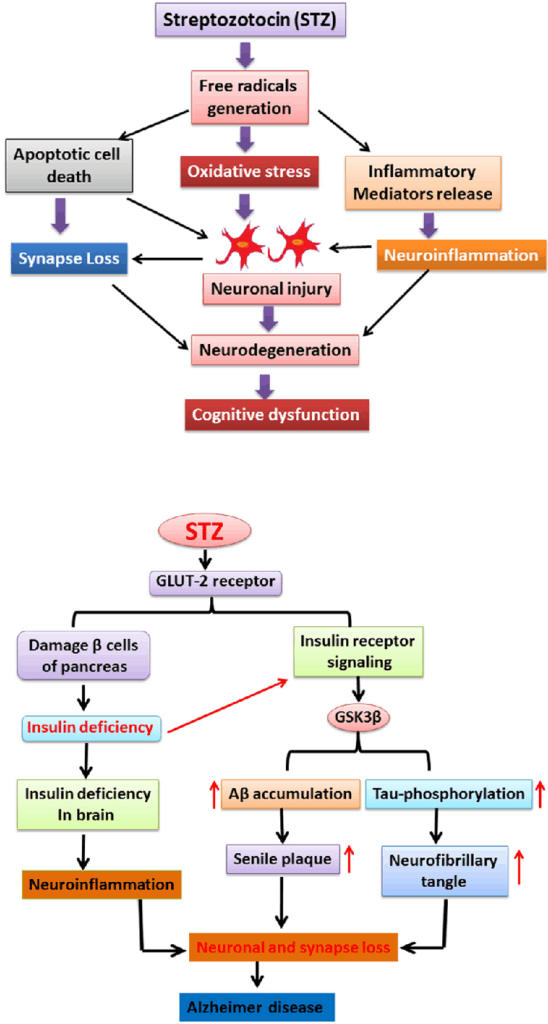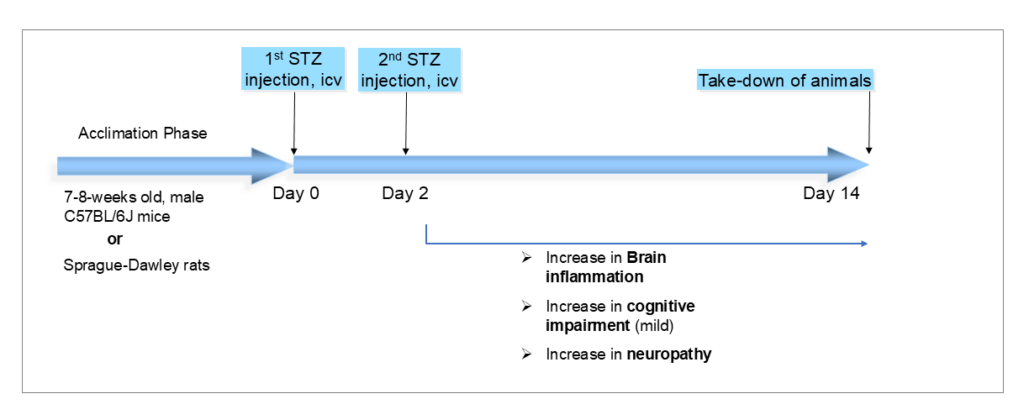SMC MODELS
icv-STZ model
The icv-STZ model (for Alzheimer’s disease)
The icv-STZ model is a mouse model to evaluate the pharmacological efficacy of drug candidates against early-stage, sporadic Alzheimer’s disease. Sporadic Alzheimer’s disease is the cause for the vast majority of all Alzheimer’s patients (about 90%) and is – in distinction to familial Alzheimer’s – influenced by a range of different risk factors and environmental influences.
Showing similar pathology to sporadic Alzheimer’s, the icv-STZ model is particularly suitable to evaluate drugs that target inflammation of the brain, neuropathy, gliosis, neuronal loss, synaptic loss as well as mild cognitive impairment.

Fig. 1 The flow diagram represents the streptozotocin (STZ) mediated free radical generation and their influence on oxidative stress, apoptotic cell death and neuroinflammation. These entire pathological factors collectively affect the neuronal function which may further implicate in Alzheimer’s disease pathology.
(Kamat PK. Neural Regen Res. 2015 Jul;10(7):1050-2.)
How we create the icv-STZ model
The icv-STZ model is created by administering streptozotocin twice intracerebroventricularly; on day 0 and day 2 – in 7–8-week-old, male C57BL/6J mice. The administration has been shown to induce the disease and lead to brain inflammation and mild cognitive impairment within a very short time period of 2 weeks.

Optionally, the model can also be conducted in 7-week-old, male Wistar rats. In the rat-based model, the animals show disease symptoms from day 9 onwards. So, the length of the study period can be chosen flexibly as long as it exceeds 9 days. We suggest a time period of 9-20 days in rats.
Analysis items and key endpoints
Histopathological analysis of the hippocampus
GFAP Immunostaining (astrogliosis marker)
Iba1 Immunostaining (microglial and macrophage marker for brain injury, inflammation, and neurodegenerative diseases)
Other parameters
Body weight
Memory impairment (Y-maze test)

Figure 1. GFAP staining of the hippocampal CA1 region.
